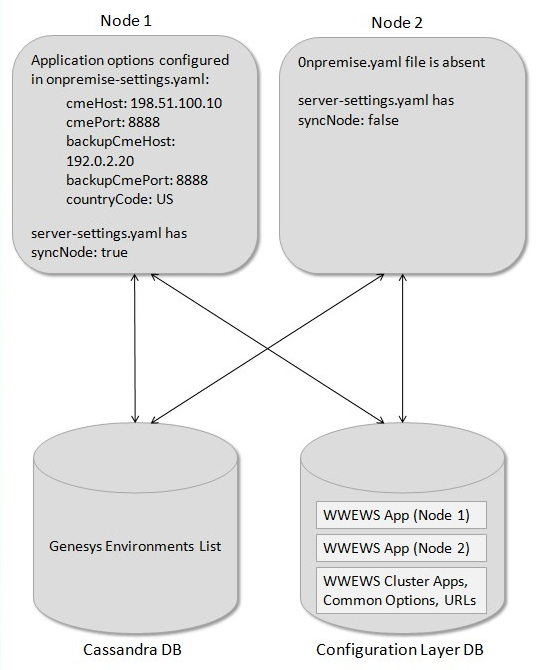(Update with the copy of version: 8.5.2DRAFT) |
(Update with the copy of version: 8.5.2DRAFT) |
||
| Line 1: | Line 1: | ||
= Architecture= | = Architecture= | ||
| − | + | This configuration assumes that you have one contact center for each Web Services cluster. You can have any number of Client nodes. The following example depicts a two-node configuration: | |
| − | |||
| − | |||
| − | This configuration assumes that you have one contact center for each | ||
* one node for the Synchronization Node (SyncNode) | * one node for the Synchronization Node (SyncNode) | ||
| Line 10: | Line 7: | ||
Each node must have a connection to the Cassandra database and the Configuration Layer database. | Each node must have a connection to the Cassandra database and the Configuration Layer database. | ||
| − | [[File:HTCC Premise Architecture 851.png|frame|center|400px| | + | [[File:HTCC Premise Architecture 851.png|frame|center|400px|Web Services On-Premise Architecture]] |
<!--==Single-Node Architecture==--> | <!--==Single-Node Architecture==--> | ||
Revision as of 19:57, January 22, 2016
Architecture
This configuration assumes that you have one contact center for each Web Services cluster. You can have any number of Client nodes. The following example depicts a two-node configuration:
- one node for the Synchronization Node (SyncNode)
- one Client node
Each node must have a connection to the Cassandra database and the Configuration Layer database.
Comments or questions about this documentation? Contact us for support!

